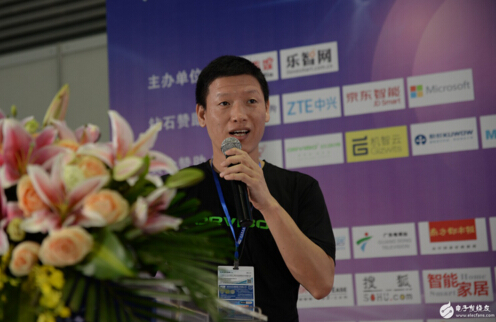How big is the smart home market in the future? According to McKinsey's latest research results, smart home applications have broad prospects. It is expected that smart homes will reach 60 billion US dollars in 2025, and the industry will show rapid growth in the future.
In the latest issue of China's smart home market research report, Analysys think tank pointed out that by 2018, with the completion of the main smart home system platform and big data service platform, downstream equipment manufacturers are perfect, and smart home products are being consumed. The market is accepted and the market size will reach 180 billion yuan.
Smart home outlets, many market participants, traditional hardware companies, platform service Internet companies, consumer electronics companies. The author summarizes the latest domestic and international six big business coffee, such as the president of Philips Greater China, and the vice president of Shenzhen Ou Ruibo Electronics Lu Zhiliang and other industry elites to share the judgment and opinions of the smart home market trends.
The leader of Philips Smart Connected Lighting
Wang Wei, president of Philips Lighting Greater China, said that lighting is no longer just about pursuing energy efficiency or energy conservation. Smart interconnection is the future of all industries. Lighting is a very important part of smart interconnection. Philips is working with different partners such as Apple and Xiaomi to realize the future of smart interconnection in the energy field.

In China, in 2015, 13 lighting companies, such as Philips and Op, announced the widespread use of Xiaomi's intelligent modules in their smart bulbs. It is understood that Xiaomi's intelligent hardware team can realize ordinary household appliances through Xiaomi intelligent modules in 1-2 days. After installing the wireless module of Xiaomi, the traditional electronic products can be connected to Xiaomi's smart home ecosystem to realize the interconnection and interoperability with the Xiaomi ecological chain.
Globally, Philips Lighting has introduced lighting terminals that are compatible with the Apple HomeKit Apple Smart Home platform, siri voice control, illuminating ceilings and carpets, Ethernet-powered lighting, and the integration of lighting and building materials.
“When every light on the ceiling has an IP address, the light has precise positioning and navigation capabilities, and its accuracy can reach centimeters, far exceeding the WIFI and Bluetooth positioning systems we currently use. For example, In Shanghai, People’s Square has 19 subway exits, and Xujiahui has 20 subway exits. People who come out often are dizzy and can’t figure out the direction. If the lights installed on the ceiling can navigate out a correct access direction, the convenience is certain. Everyone needs it.†The international electronics giant represented by Philips has already realized the application of this technology and has become another breakthrough in the use and utilization of light by human beings. Now, Philips is preparing to launch an LED with Internet access, navigation and positioning in China.
According to Wang Wei, president of Philips Lighting Greater China, LED lighting accounted for more than 53% of the company's turnover. The Internet and the Internet of Things have made LED lighting appear infinite imagination, reinterpreting its meaning, and smart connected LED lighting will become a trend in the future.
Philips is one of the early companies to turn to smart connected lighting. According to public information, Philips' lighting intelligent goods association includes home, government, office, commerce, and urban areas.
Lu Zhiliang, Vice President, Shenzhen Ou Ruibo Electronics

Lu Zhiliang believes that the development of smart home should be divided into three stages: first, intelligentization of hardware products to achieve networking; second, the interconnection of all things, to achieve interconnection and interaction of different products; third, synergy, use of large Data and artificial intelligence technology truly realize the seamless interconnection and scene of smart home. “We cut into the market from smart products and interact with equipment manufacturers to further realize the interoperable smart home platform and application solutions. We hope to bring more temperature to life and simplify the complicated work with design and products.†Zhiliang said.
Dr. Su Weimin talks about smart home Zigbee 3.0
At the 2016 Smart Home World Conference, Dr. Su Weimin said that when ZigBee 3.0 was released this year, three chip manufacturers had provided complete network platform certification. At that time, three chip manufacturers provided terminal manufacturers with ZigBee 3.0-based product development. In August of this year, we saw that there are 7 chip manufacturers in the world, providing 13 chip products and obtaining ZigBee 3.0 certification, which means they can support the development of ZigBee3.0 products, which makes the developers of smart homes numerous. The choice among chip manufacturers has greatly improved the choice of chips, and the most important is the bargaining space.
In terms of development with the Zigbee 3.0 standard, we have seen a large number of companies have begun to invest in the development of smart home products using the ZigBee standard. Last year, more than 40 Chinese companies joined the ZigBee Alliance. A statistic from yesterday, from Greater China The number of companies joining the ZigBee Alliance has reached more than 90, which means that this number accounts for more than 20% of the global ZigBee Alliance and becomes an important branch of the ZigBee Alliance.
Absolute Encoder,Through Hollow Encoder,Absolute Encoder 13 Bit,14 Bit Optical Rotary Encoder
Jilin Lander Intelligent Technology Co., Ltd , https://www.jilinlandertech.com